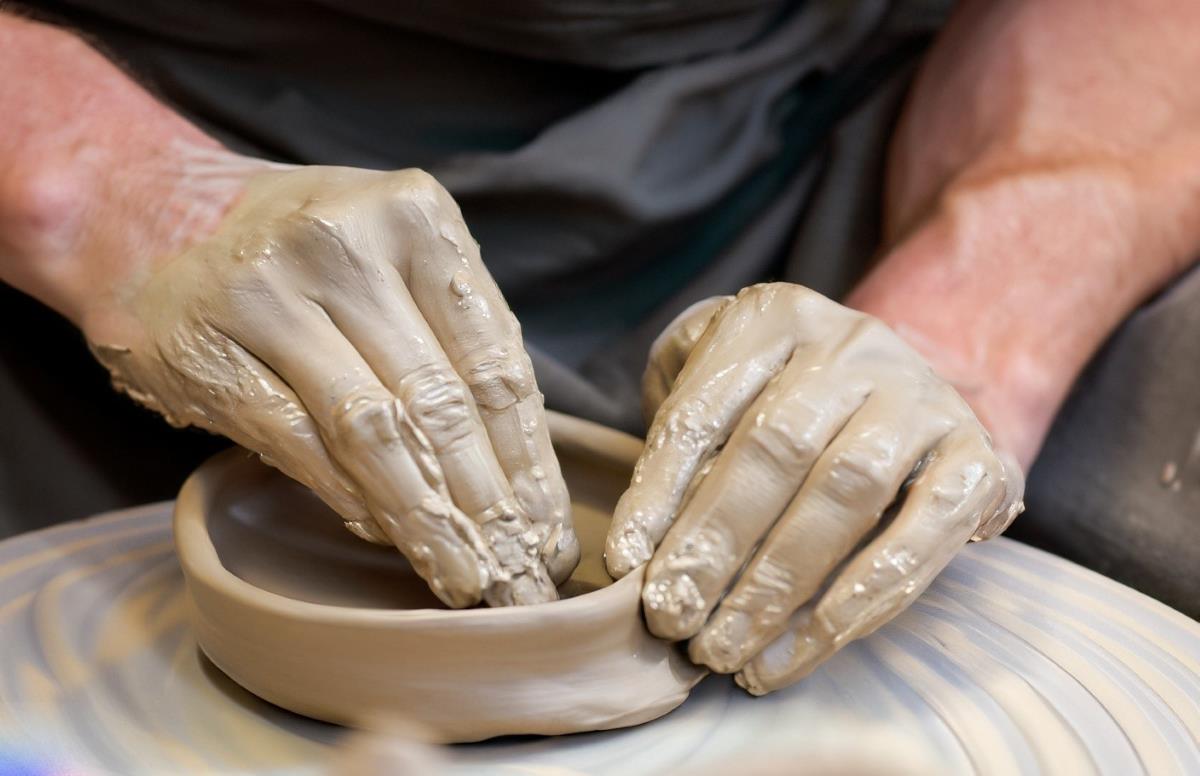Have you ever wondered about the vibrant and intricate designs found on Mexican pottery? From plates and mugs to figurines and vases, the artistry of Mexican pottery is truly captivating. In this article, we will delve into the rich artistic heritage of Mexican pottery and explore the cultural significance behind its stunning craftsmanship.
When you think of Mexico, what usually comes to mind? Perhaps it’s the clear turquoise waters of its beaches or the dazzling ancient ruins scattered across the country. While Mexico is renowned for its natural beauty and historical landmarks, it is also home to a thriving art scene that encompasses a wide range of mediums. One such medium that has been cherished for centuries is pottery. Mexican pottery is distinctive for its vibrant colors, intricate patterns, and unique shapes. Each piece tells a story, reflecting the rich cultural heritage and artistic traditions passed down through generations. So, if you’re interested in learning more about this fascinating art form, keep reading to discover the secrets of Mexican pottery and how it continues to captivate people around the world.
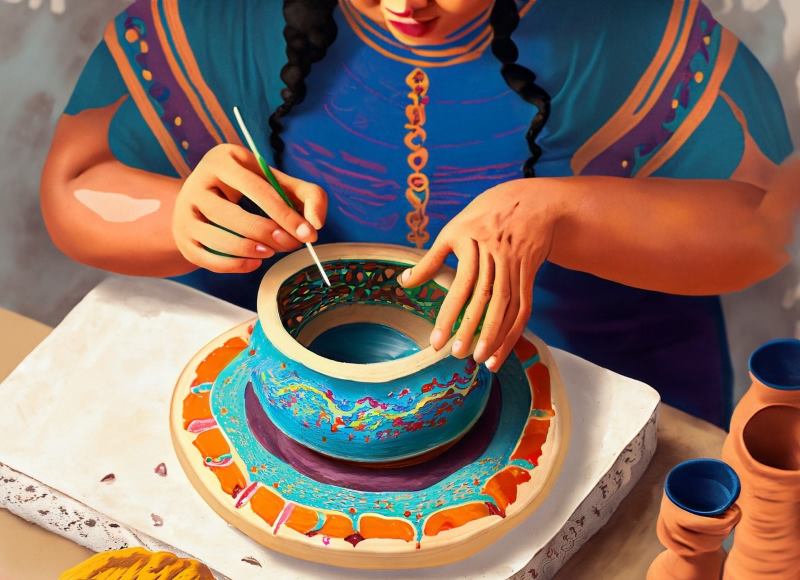
Exploring the Rich Artistic Heritage of Mexican Pottery
Mexico has a long and illustrious history when it comes to pottery. From ancient indigenous cultures to the influences of Spanish colonization, Mexican pottery has developed into a rich and diverse art form. This article will delve into the origins, techniques, styles, symbolism, and cultural significance of Mexican pottery, as well as its economic importance and challenges faced by the industry. So grab a cup of coffee, sit back, and let’s embark on a journey to discover the colorful art and tradition of Mexican pottery.
Ancient Origins of Mexican Pottery
The roots of Mexican pottery can be traced back to pre-Columbian times, where ancient indigenous cultures created stunning ceramic objects. The Olmecs, Mayans, and Aztecs were among the civilizations that cultivated the art of pottery in Mexico. These early cultures developed sophisticated techniques and produced ceramics for both functional and ceremonial purposes.
Influence of Indigenous Cultures on Mexican Pottery
The influence of indigenous cultures on Mexican pottery is far-reaching and undeniable. Each civilization brought its own unique style and symbolism to the craft. The Olmecs, known for their colossal stone heads, excelled in creating simple yet impactful pottery. The Mayans, on the other hand, produced intricately painted vessels with intricate hieroglyphics and scenes from daily life. And the Aztecs, known for their elaborate rituals and vibrant imagery, crafted pottery that reflected their rich cosmology and religious beliefs.
Spanish Influence on Mexican Pottery
With the arrival of the Spanish conquistadors in the 16th century, Mexican pottery took on new forms and techniques influenced by European traditions. Spanish craftsmen introduced the wheel as a pottery-making tool, which revolutionized the process and allowed for more precise and symmetrical shapes. The Spanish also brought with them the tradition of tin-glazed earthenware, known as majolica, which further enriched the Mexican pottery scene.
Traditional Techniques Used in Mexican Pottery
Mexican pottery is known for its variety of traditional techniques that have been passed down through generations. These techniques include hand-building, coil pottery, slab pottery, and wheel throwing.
Hand-Building
Hand-building is one of the oldest and most basic techniques used in Mexican pottery. It involves shaping clay by hand, without the use of a potter’s wheel. This technique allows for greater artistic expression and the creation of unique and irregular shapes.
Coil Pottery
Coil pottery, also known as coiling, involves creating pottery by stacking and joining coils of clay. This technique allows for the creation of larger vessels with a uniform thickness and can result in intricate designs and patterns.
Slab Pottery
Slab pottery is another traditional technique used in Mexican pottery. It involves rolling out clay into flat sheets, which are then cut and assembled to create various forms. Slab pottery allows for precise shaping and intricate detailing.
Wheel Throwing
Wheel throwing, introduced by the Spanish, is a technique where clay is shaped on a potter’s wheel. This method allows for the creation of symmetrical and consistent forms and is often used for functional pottery such as bowls, plates, and cups.
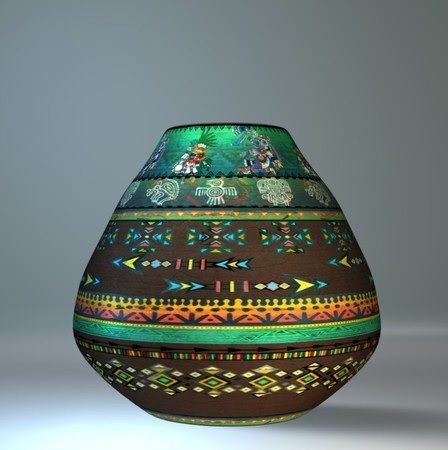
Distinct Styles of Mexican Pottery
Mexican pottery is renowned for its distinct styles, each with its own unique characteristics and techniques. Some of the most notable styles include Talavera pottery, majolica pottery, burnished pottery, and black pottery.
Talavera Pottery
Talavera pottery is perhaps one of the most recognizable and iconic styles of Mexican pottery. Originating from the town of Puebla, this style is characterized by its vibrant colors, intricate patterns, and use of tin-glazed earthenware. Talavera pottery is meticulously hand-painted by skilled artisans and often depicts floral motifs and Spanish colonial influences.
Majolica Pottery
Majolica pottery, which takes its name from the Spanish island of Majorca, is another popular style of Mexican pottery. This style is characterized by its bright and bold colors, intricate designs, and glossy finish. Majolica pottery is typically decorated with intricate patterns and motifs inspired by nature, such as flowers, fruits, and animals.
Burnished Pottery
Burnished pottery is a style that dates back to pre-Columbian times and is still practiced today in some rural communities. This style involves polishing the clay surface with smooth stones or other objects to create a shiny, polished finish. Burnished pottery often showcases minimalist designs and simple, yet elegant, forms.
Black Pottery
Black pottery, also known as barro negro pottery, is a style that originated from the town of San Bartolo Coyotepec in Oaxaca. This style is characterized by its distinct black color, which is achieved through a unique process of firing the pottery in an oxygen-reduced environment. Black pottery often features intricate carvings and etchings, creating a beautiful contrast between the polished black surface and the detailed designs.
Symbolism and Meaning in Mexican Pottery
Mexican pottery is not just about aesthetics; it is also steeped in symbolism and meaning. From religious symbolism to symbolic elements, pottery in Mexico often carries deep cultural significance.
Religious Symbolism in Mexican Pottery
Religion plays a significant role in Mexican culture, and this is reflected in the pottery. Many ceramic objects depict religious figures, such as the Virgin of Guadalupe or various saints. These pieces serve as both religious icons and decorative items, often used in home altars or as gifts during religious celebrations.
Symbolic Elements in Mexican Pottery
In addition to religious symbolism, Mexican pottery is also known for incorporating symbolic elements. For example, animals like the jaguar or the sacred feathered serpent, Quetzalcoatl, are often depicted to represent power and protection. Symbols of fertility, such as corn and flowers, are also commonly found in Mexican pottery, representing abundance and prosperity.
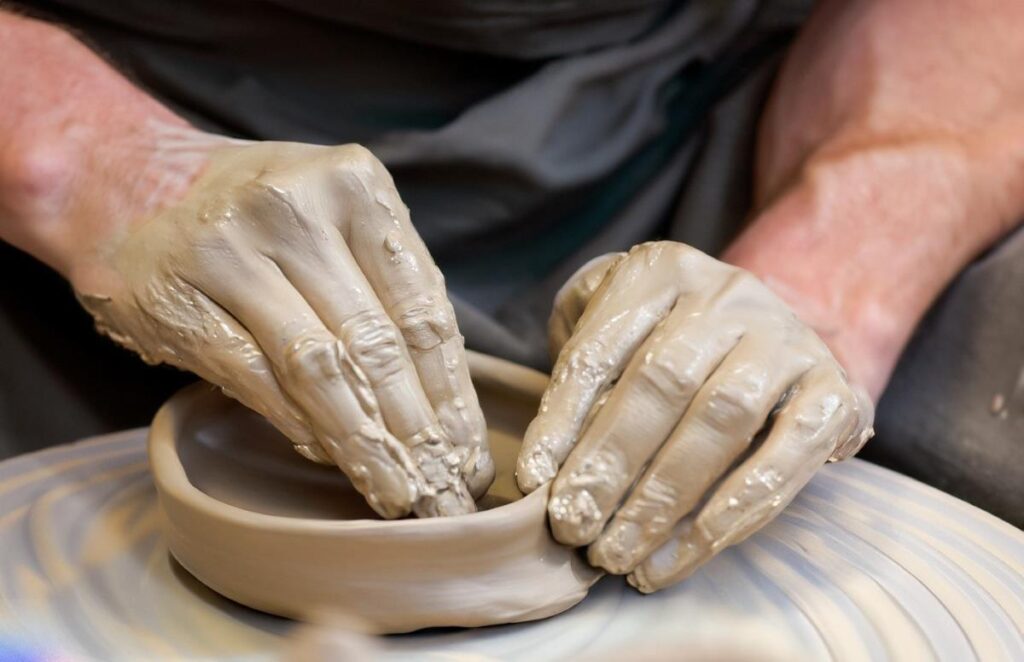
Famous Mexican Pottery Centers
Mexico is home to several renowned pottery centers, where the art form thrives. Three notable centers are Tlaquepaque, Puebla, and Oaxaca.
Tlaquepaque
Located near Guadalajara, Tlaquepaque is a picturesque town known for its vibrant pottery scene. The streets are lined with workshops and galleries showcasing both traditional and contemporary Mexican pottery. Visitors can explore the various studios, watch artisans at work, and even try their hand at creating their own pottery pieces.
Puebla
Puebla, the birthplace of Talavera pottery, is another significant pottery center in Mexico. The city is known for its rich tradition and high-quality craftsmanship. The Talavera pottery produced in Puebla is highly sought after, and visitors can visit the workshops and showrooms to see the artisans in action and purchase unique pieces directly from the source.
Oaxaca
Oaxaca, a culturally rich state in southern Mexico, is renowned for its diverse and vibrant pottery scene. The town of San Bartolo Coyotepec is famous for its exquisite black pottery, while the villages of San Martin Tilcajete and San Antonino Castillo Velasco are known for their distinctive hand-painted ceramics. Visitors to Oaxaca can witness the artistic process firsthand and explore the numerous galleries and markets offering a wide range of pottery products.
Contemporary Mexican Pottery Artists
Mexican pottery continues to evolve and adapt to contemporary trends, thanks to the creativity and innovation of modern artists. From renowned pottery artists to emerging talents, the Mexican pottery scene is as diverse as ever.
Renowned Mexican Pottery Artists
One of the most acclaimed Mexican pottery artists is Juan Quezada of Mata Ortiz, known for his exceptional hand-built pottery and revitalization of the Casas Grandes ceramic tradition. Another renowned artist is Angélica Vásquez Cruz, who specializes in creating intricately painted and carved pieces inspired by the traditions of her native Oaxaca.
Innovative Trends in Mexican Pottery
Alongside traditional styles, Mexican pottery is embracing modern techniques and designs. Contemporary artists are experimenting with new materials, such as porcelain and stoneware, and incorporating modern motifs and themes into their work. This fusion of tradition and innovation ensures that Mexican pottery remains a vibrant and evolving art form.
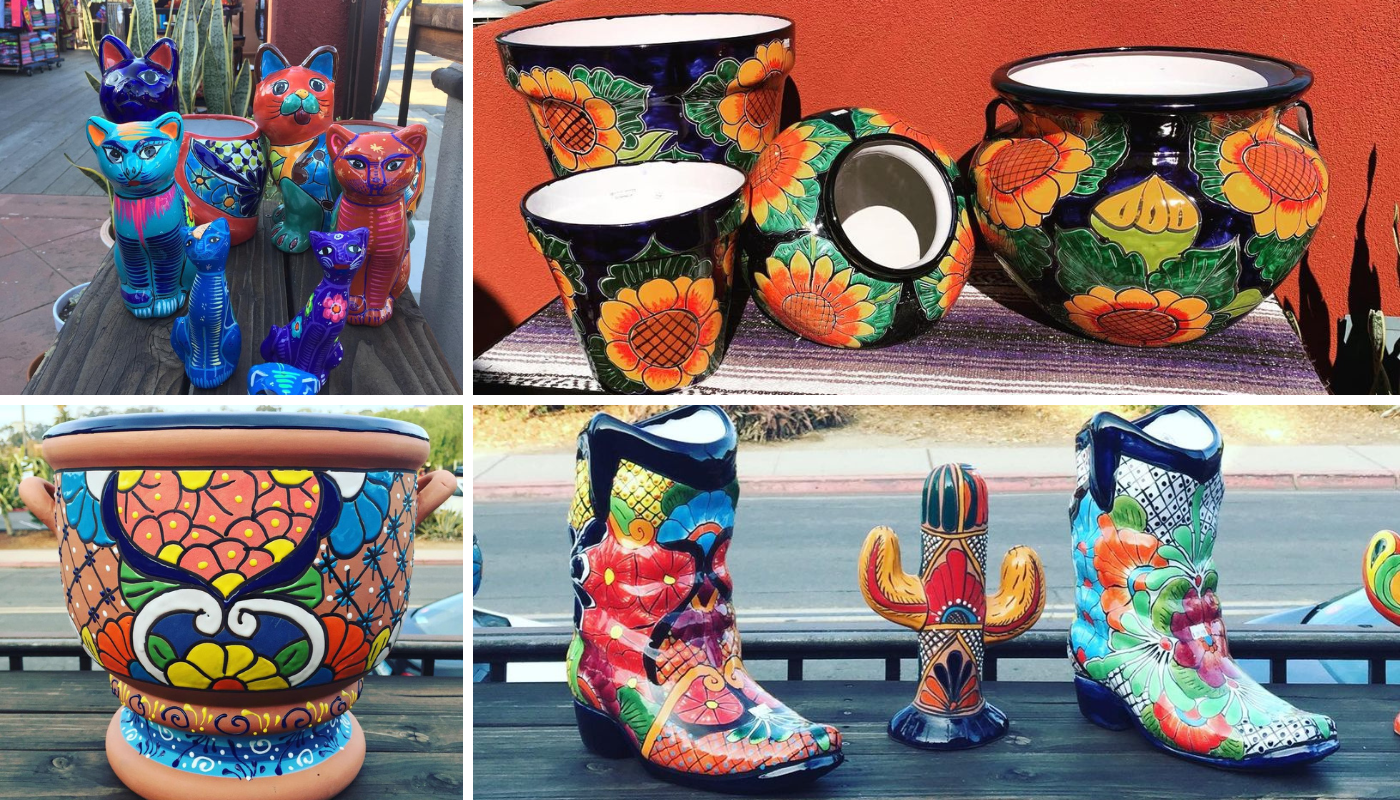
The Significance of Mexican Pottery in the Culture
Mexican pottery holds immense cultural significance and plays a fundamental role in Mexican society. Its uses span from functional everyday objects to ceremonial and decorative pieces.
Functional Use of Mexican Pottery
Mexican pottery is deeply ingrained in everyday life in Mexico. From plates and bowls for serving meals to pitchers and cups for beverages, pottery has both practical and aesthetic value in Mexican households. Traditional cooking methods, such as making tortillas on a comal or brewing coffee in a clay pot, still rely heavily on pottery.
Ceremonial and Decorative Use of Mexican Pottery
In addition to its practical uses, Mexican pottery is also used for ceremonial and decorative purposes. Elaborate ceramic sculptures, religious icons, and decorative pottery are often found in churches, museums, and private collections. Mexican pottery is also frequently incorporated into traditional celebrations and festivals, adding a festive and symbolic touch to these events.
The Economic Importance of Mexican Pottery
Mexican pottery holds economic importance, serving as a source of livelihood for many artisans and contributing to the country’s economy through trade and export.
Pottery as a Source of Livelihood
For generations, Mexican pottery has provided a livelihood for countless artisans and their families. Many artisans continue to practice traditional techniques, passing down their skills from one generation to the next. The income generated from pottery sales sustains entire communities, preserving centuries-old traditions and supporting local economies.
Pottery Trade and Export
Mexican pottery has a thriving international market, with exportation playing a vital role in the industry’s economic impact. The demand for Mexican pottery extends far beyond Mexico’s borders, with collectors and enthusiasts appreciating its beauty and craftsmanship worldwide. The trade and export of Mexican pottery not only contribute to the economy but also promote Mexican culture and heritage on a global scale.

Preserving and Promoting Mexican Pottery
Efforts to preserve and promote Mexican pottery are essential to ensure the continuity of this art form and its cultural significance.
Efforts to Preserve Traditional Techniques
Organizations and institutions in Mexico are dedicated to preserving traditional pottery techniques and passing them on to future generations. Workshops, apprenticeships, and educational programs are conducted to train aspiring artisans and provide them with the knowledge and skills required to continue the legacy of Mexican pottery.
Promotion of Mexican Pottery as Folk Art
Mexican pottery plays a crucial role in the country’s identity as a cultural destination. It is showcased in museums, promoted through festivals and exhibitions, and celebrated as a form of folk art. By recognizing and promoting Mexican pottery as a valuable and unique art form, both domestically and internationally, it contributes to the preservation and appreciation of this rich cultural heritage.
Mexican Pottery in Modern Interior Design
Mexican pottery has found its place in modern interior design, adding a vibrant and authentic touch to contemporary spaces.
Mexican Pottery as Home Decor
The unique colors, patterns, and textures of Mexican pottery make it a popular choice for home decor. From decorative plates and vases to intricate ceramic sculptures, pottery pieces can bring a touch of Mexico’s rich artistic heritage into any living space. They can be used as statement pieces, adding character and a pop of color, or incorporated into a more eclectic design scheme for a bohemian or rustic feel.
Incorporating Mexican Pottery into Contemporary Spaces
Modern interior designers often mix traditional and contemporary elements to create unique and dynamic spaces. Mexican pottery can be thoughtfully integrated into a contemporary design scheme, serving as focal points or accents that provide cultural depth and visual interest. By combining modern furniture and finishes with Mexican pottery, one can create a harmonious and well-balanced interior that pays homage to the country’s artistic traditions.
Challenges Faced by Mexican Pottery Industry
Despite its rich history and cultural significance, the Mexican pottery industry faces various challenges that threaten its sustainability and continued growth.
Competition from Mass-Produced Pottery
Mass-produced pottery, often imported from countries with lower production costs, poses a significant challenge to the Mexican pottery industry. These readily available and inexpensive products can undermine the demand for handmade Mexican pottery and reduce the income opportunities for local artisans.
Globalization and Changing Consumer Preferences
As the world becomes increasingly interconnected, consumer preferences are constantly evolving. Western influences and changing lifestyles have led to a shift in demand towards mass-produced, factory-made goods. This shift can threaten the viability of traditional pottery techniques and styles, which may struggle to compete in a fast-paced, globalized market.
Appreciating the Beauty and Cultural Significance of Mexican Pottery
Mexican pottery is not only visually stunning but also carries layers of cultural and historical significance.
Impact of Mexican Pottery on Art and Culture
Mexican pottery has had a profound impact on art and culture, both within Mexico and beyond. Its vibrant colors, intricate designs, and unique craftsmanship have inspired artists and captivated audiences worldwide. The fusion of indigenous and European influences has resulted in a distinct and recognizable art form that is an integral part of Mexico’s cultural heritage.
Personal Connection to Mexican Pottery
For many, Mexican pottery holds a personal connection and serves as a reminder of their heritage or travel experiences. Whether it is a cherished piece passed down through generations or a memento from a visit to Mexico, pottery can evoke a sense of nostalgia and connection to one’s roots. The beauty and craftsmanship of Mexican pottery have the power to transcend borders and create a lasting impression on anyone who encounters it.
Conclusion
Mexican pottery is an art form filled with history, tradition, and cultural significance. From its ancient origins to the influences of Spanish colonization, Mexican pottery has evolved into a diverse and vibrant art form. Its traditional techniques, distinct styles, symbolism, and economic importance make Mexican pottery an integral part of the country’s rich artistic heritage. As we explore the beauty and significance of Mexican pottery, let us appreciate and celebrate the artisans who continue to carry forward this ancient craft, ensuring its preservation for future generations to enjoy.
